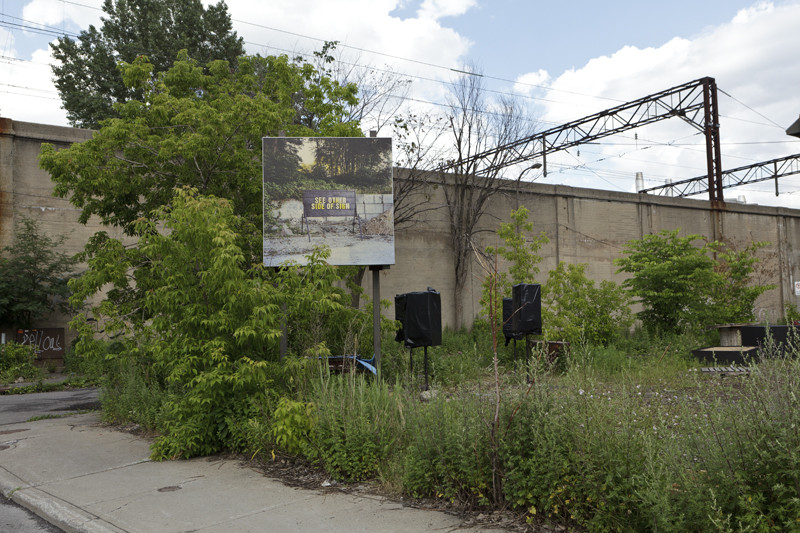


In situ cavalcade
Artists:
Virginie Laganière et Jean-Maxime Dufresne (duo, Montreal)
Philippe Côté (Montreal), Brandon LaBelle (United States,Germany)
Antoine Nessi (France)
Carlos Contente (Brazil)
Wide shot series :
Ron Terada (Vancouver)
Michael Flomen (Montreal)
Shelley Miller (Montreal)
Rebecca Belmore (Vancouver)
Curator: Esther Bourdages
"I guess I always feel the most powerful thing about sound is its ability to integrate, disrupt, or stimulate other things, whether they be visual objects, narrative images, spatial constructions, social gatherings...". *
Fugue urbaine presents a cavalcade of in situ works from Canadian and International artists that unite Ottawa St from East to West, from Faubourg des Récollets to Griffintown. Centred around two sites, the former New City Gas building and two viaducts beneath Bonaventure Highway and the railway, artistry intertwines with the urban fabric at a time when Griffintown faces increasing uncertainty ahead of a major redevelopment. To point, the Société du Havre, a paragovernmental municipal corporation of the city of Montreal, has announced that Bonaventure Highway is to be converted into a boulevard from 2011.
Globalization forces cities to re-invent, re-define and re-configure themselves. News-media and publications increasingly describe cities in terms of fluidity and sustainability. Urban renewal often results from socio-economic motivations and a desire to adjust to competition. In this respect, architect and theorist Bernhard Tschumi wrote that a space does not exist without an event, nor does architecture exist without a program. The historic fabric of Griffintown is once again threatened by contemporary alterations. History appears to be repeating itself. During the 1960s, hoping to cultivate a more prestigious image, part of Griffintown was demolished to make way for the Bonaventure and Ville-Marie Highways, thus further isolating and impairing the neighbourhood.
Facing renewed upheaval, the artists were asked to reflect on the sites: they recuperated the past and incorporated the present, inspired by the hopes and anxieties— as well as the social, political and economic realities— of Griffintown’s residents. Fugue urbaine invites the public to wander Ottawa St with a fresh perspective on the redeveloped Faubourg des Récollets and the precarious flicker of Griffintown. We discover the resonant fallacy of Virginie Laganière and Jean-Maxime Dufresne’s phantom car, Brandon LaBelle’s four-voice audio theatre, a vibrant mural by Carlos Contente, the Rature Lumineuse of Antoine Nessi, and Philippe Côté’s rendering of a ruin. In concert with architecture and urbanism, the artists aspire to humanise an area that may soon undertake an irreversible metamorphosis by instilling it with an individual voice.
With this event, the Darling Foundry hopes to give impetus to Ottawa Street's transformation into a "cultural corridor", a project in partnership with the Griffintown community. A community initiative for the promotion of a cultural corridor in Griffintown is inviting artists to submit proposals to the inaugural-curated series of public art installations and performance interventions that will be programmed monthly between September 2010 and August 2011.
The Darling Foundry would like to thank the Canada Council for the Arts for its support to the project.
